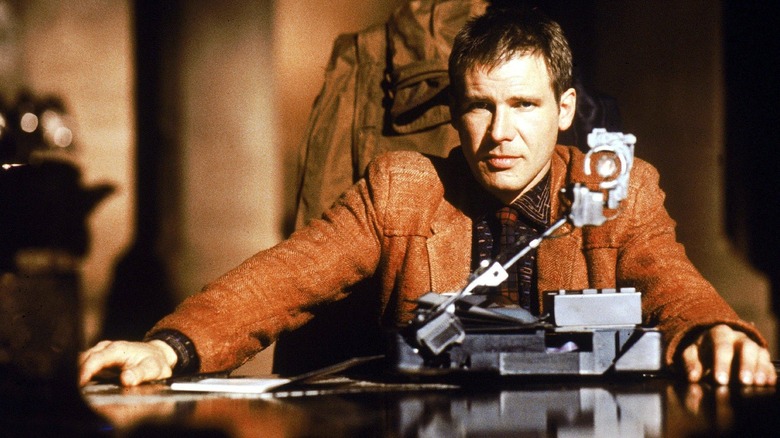
Based on Philip K. Dick's beloved sci-fi novella "Do Android's Dream of Electric Sheep?", Ridley Scott's landmark 1982 science fiction film "Blade Runner" has become a cultural touchstone since bombing at the box office when it was first released nearly four decades ago. Thanks to home video and alternate versions released in 1992 and 2007, the movie has had a far greater longevity than some of its contemporaries, and is now considered in the same realm as "2001: A Space Odyssey" and "Star Wars" as a seminal work in the genre that influenced countless films which followed.
One aspect of the film that keeps the fanbase alive are its infamous alternate endings, which hinge on the central question of whether or not Harrison Ford's title bounty hunter Rick Deckard is himself one of the very outlawed androids he is hunting. Let's take a look at each version — all of which come in at around the same running time of 117 minutes — and figure out the nature of this particular "reality" for ourselves!
Theatrical Cut
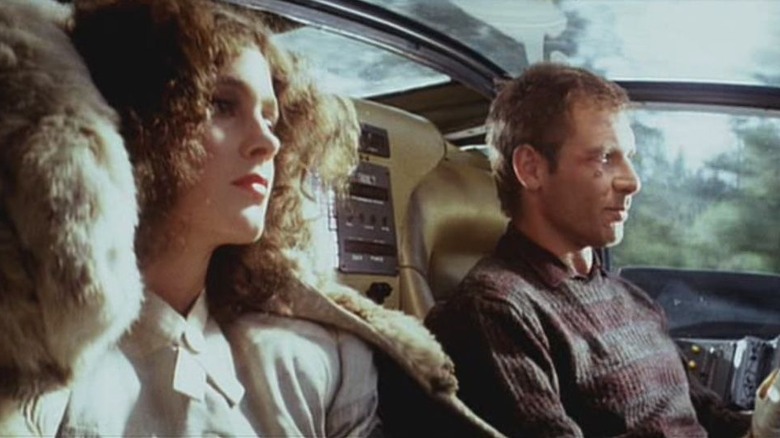
Like other big budget science-fiction films of the mid-eighties like David Lynch's "Dune" or James Cameron's "Aliens," "Blade Runner" was initially released to theaters in a form that wasn't quite what the filmmakers had in mind. Warner Bros. had imposed on Scott that he add an annoying narration by Harrison Ford to explain certain things that probably didn't need to be explained. This "Captain Obvious" voiceover is used sparingly but almost every instance undercuts key moments like the death of Roy Batty (Rutger Hauer).
Another big addition to this first version is a tacked-on ending that shows Deckard and the replicant Rachel (Sean Young) driving through sunny mountains away from Los Angeles towards freedom. The footage was cobbled together from hasty reshoots with the two actors in the Spinner car and mountain B-roll helicopter footage leftover from Stanley Kubrick's "The Shining." The voiceover in this final moment is particularly egregious, as it attempts to suddenly retcon so much of what we have already been told about replicant lifespans and the real significance behind the origami unicorn that police officer Gaff (Edward James Olmos) left behind.
"Gaff had been there and let her live. 4 years he figured. He was wrong. Tyrell had told me Rachel was special. No termination date. I didn't know how long we had together. Who does?"
This is precisely the kind of "love conquers all" ending Universal would try and fail to implement on Terry Gilliam's equally dystopian "Brazil" a few years later. It negates the entire tone and mood of "Blade Runner," but of course there are some fans out there who prefer the '82 version, likely because it's the one they grew up loving.
Director's Cut
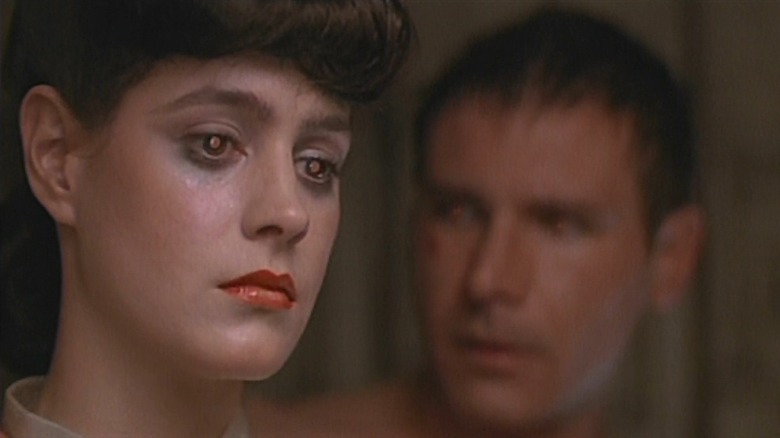
In May of 1990 the original workprint version of the film used for test audiences and running 113 minutes was covertly shown without Scott's approval at the Los Angeles Fairfax Theater. Positive buzz for the cut began to generate, which resulted in further showings of the workprint at venues such as LA's NuArt Theater, San Francisco's Castro Theatre and in at the Academy of Motion Picture Arts and Sciences in April 1991. Following Scott's extensive notes, film preservationist Michael Arick put together what's known as the 1992 "Director's Cut" of "Blade Runner" based on the workprint.
This new cut became the default version for many years, eliminating the redundant voiceover, the happy ending (it now stops with the elevator closing on Deckard after he acknowledges Gaff's unicorn) and reinstates a short bit of crucial footage: Deckard's unicorn dream. What's the unicorn all about? Well, at the time it was shot some speculated it was merely Ridley Scott trying to tack on some test footage for his next fantasy film "Legend," which if you've seen you know revolves around the fate of unicorns. Whether or not that's true, it plays the most important part in understanding why Deckard is, in fact, a replicant himself.
There is a whole sequence in the middle of the film where Deckard tells Rachel several anecdotes from her childhood which she never revealed to anybody, including watching spiders being born. Deckard knows these memories because they were implanted in Rachel to make her believe she is human. At another point in the film Deckard plays piano in front of near-impossibly old photographs and has a daydream about a unicorn running through a fog-shrouded forest. This is meant to be something personal that he has never spoken of to anyone. So, when he finds the origami unicorn at the end it signals that Gaff knows of these dreams, and therefore Deckard has been implanted as well ... because he's a replicant, just like Rachel. Gaff left the unicorn there not as a friendly gesture, but as a warning that Deckard and Rachel are going to be hunted.
One further clue that Deckard is a replicant is a scene where he talks to Rachel in his apartment. She asks him if he would come after her, hun her. "No... No, I wouldn't. I owe you one... But somebody would," says Deckard. When he turns around to say that final part, you can see the specific glow in his eyes that all replicants have throughout the film.
Final Cut
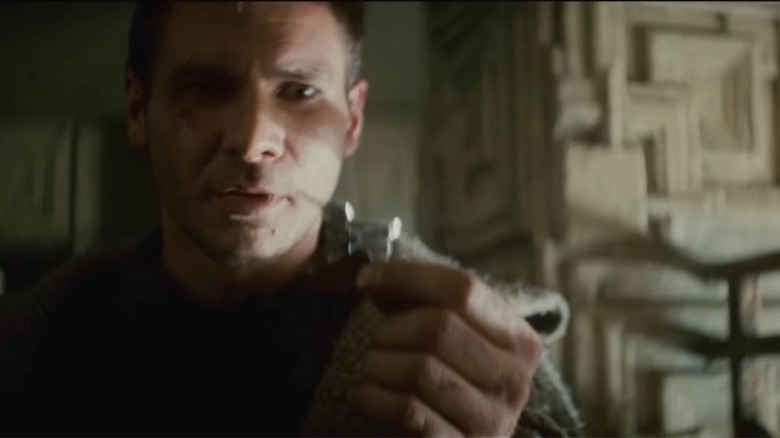
While very similar to the "Director's Cut," Ridley Scott's "Blade Runner: The Final Cut" is the definitive version. Supervised entirely by Scott, this cut reinstates much of the violence absent from the 1992 one, including Tyrell's eyes being gauged out and Roy giving himself a bloody stigmata. Zhora's death scene, which originally featured an obvious stunt double running through plate glass in a bad wig, was reshot to include original actress Joanna Cassidy more prominently. The full-length unicorn vision is now longer and more pronounced as well. A shot of the dove flying away after Roy Batty dies was redone to make it more in keeping with the film's overall aesthetic. Several other additional shots and digital touch-ups like wire removal were also included.
Since this version is merely an enhanced, more nuanced take on the "Director's Cut," it doesn't alter the meaning of the ending any more than the one from 1992, but it is overall a much richer and more fulfilling culmination of a 25-year struggle to restore "Blade Runner" back to the experience the filmmakers intended it to be. Unlike the numerous Special Edition versions of the Star Wars Trilogy released over the years, "Blade Runner: The Final Cut" is generally held up as an example of a revisit to a beloved film done right.
Blade Runner 2049
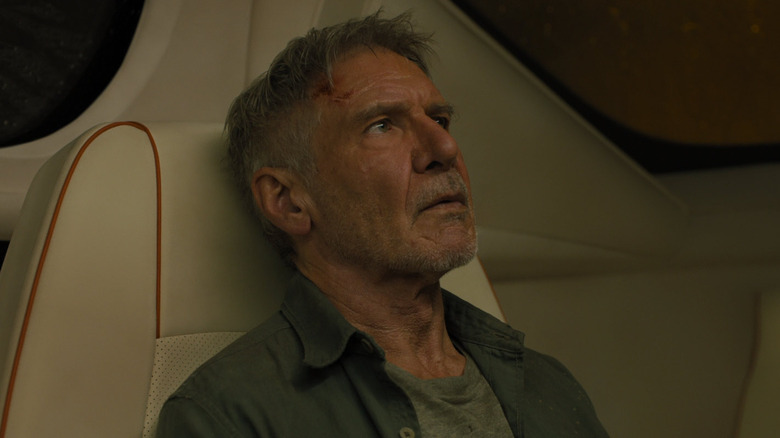
For Denis Villeneuve's 2017 sequel "Blade Runner 2049," the inevitable question over whether or not Deckard was a replicant had to be addressed. Harrison Ford's mere presence as Deckard, having aged like a normal human being, raises questions as to what kind of replicant Deckard is. Clearly one who can age, like Dave Bautista's farmer character at the beginning of the film has as well. The filmmakers, perhaps wisely, decided the best way to address this issue directly was to skirt around it completely, leaving it open-ended and essentially allowing viewers to choose their own adventure as to which version of "Blade Runner" it was a sequel to. Screenwriter Michael Green acknowledged this during an interview with Collider:
"The fact that it's a question is what's important. The puzzle of Blade Runner, one of the many reasons it's the classic it is, is that the chasing for authenticity is both baked into the narrative of the story and the meta-narrative of the film that there is no authentic answer to that question. Which just meant that telling the further story, that had to be baked into the story as well, that everyone who watches it has that question of which version should I watch, what does that mean, and the answer is you don't get to know. Generally American audiences are very uncomfortable with that level of irresolution. Blade Runner challenges that and it's not just an American favorite, it's a global favorite."
Whichever way you choose to interpret "Blade Runner," it stands as a monumental achievement in bravura science-fiction from a master visualist who is still going strong today.
Read this next: The 14 Greatest Science Fiction Movies Of The 21st Century
The post The Multiple Endings of Blade Runner Explained appeared first on /Film.
0 Commentaires